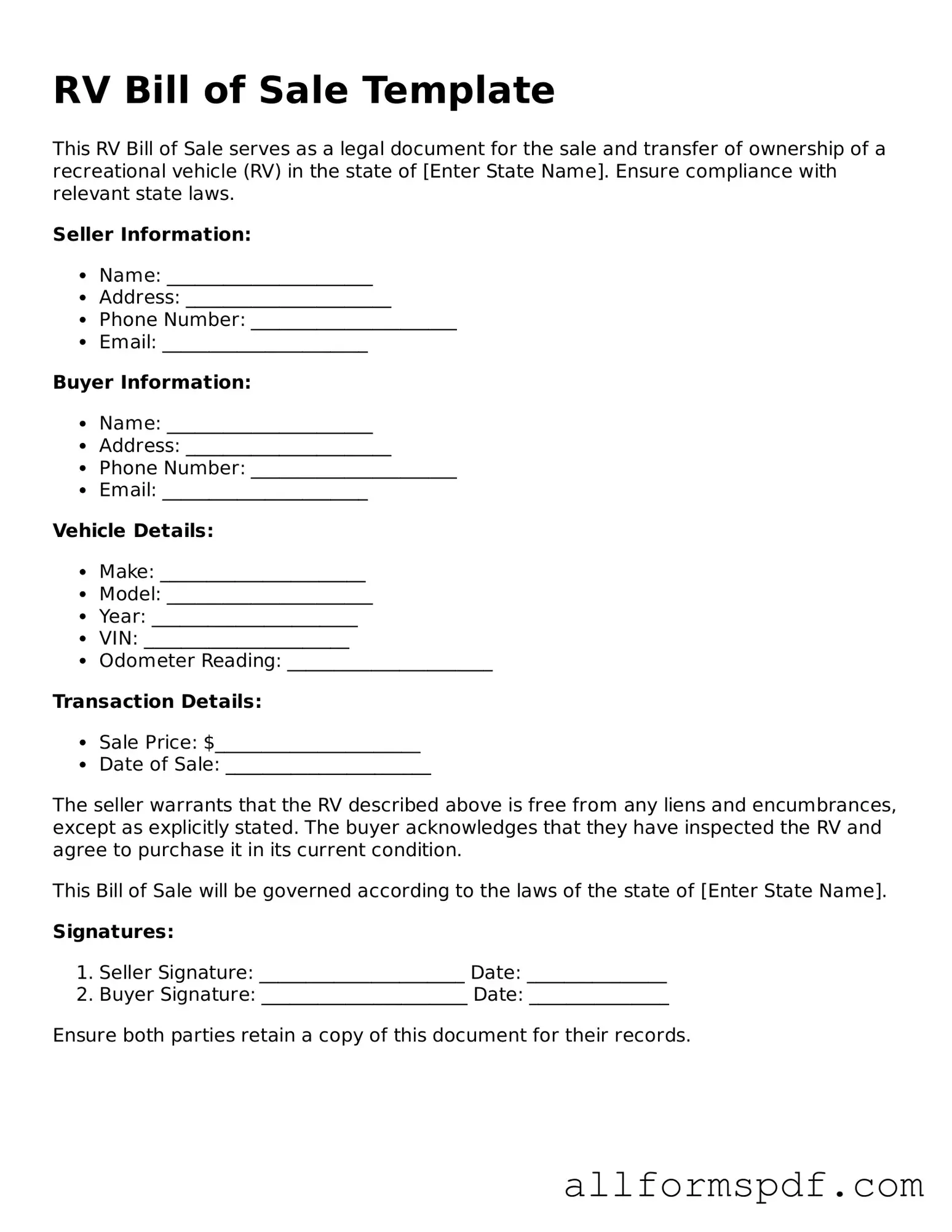Printable RV Bill of Sale Form
An RV Bill of Sale form is a legal document that records the sale of a recreational vehicle between a buyer and a seller. This form serves as proof of ownership transfer and includes important details such as the vehicle’s identification number, sale price, and the names of both parties involved. Having a properly completed RV Bill of Sale is essential for ensuring a smooth transaction and protecting the interests of both the buyer and seller.
Create My RV Bill of Sale Now
